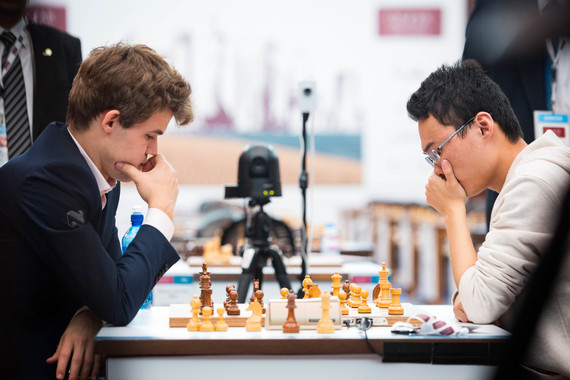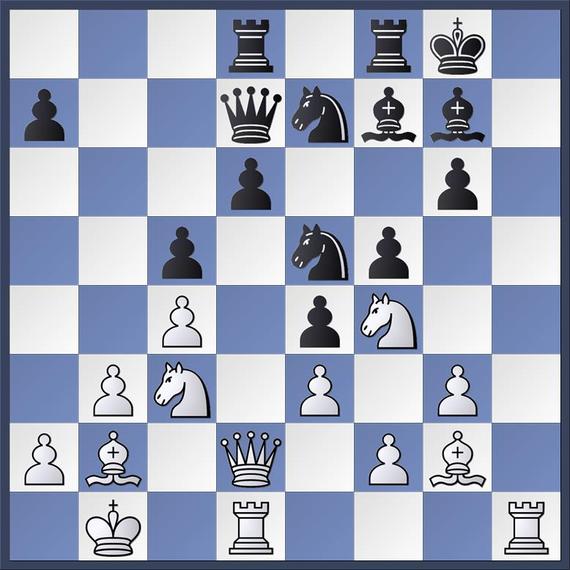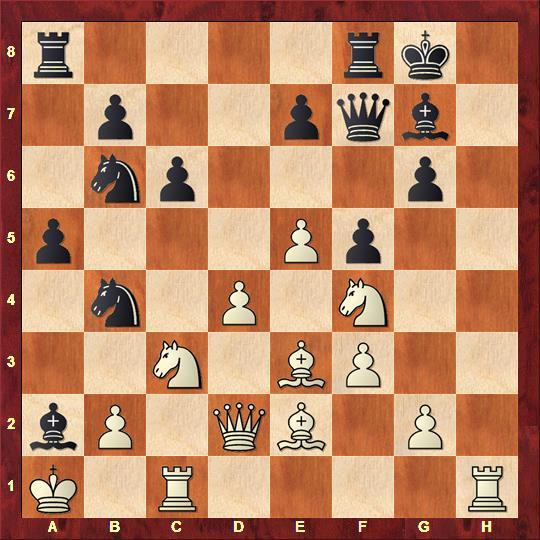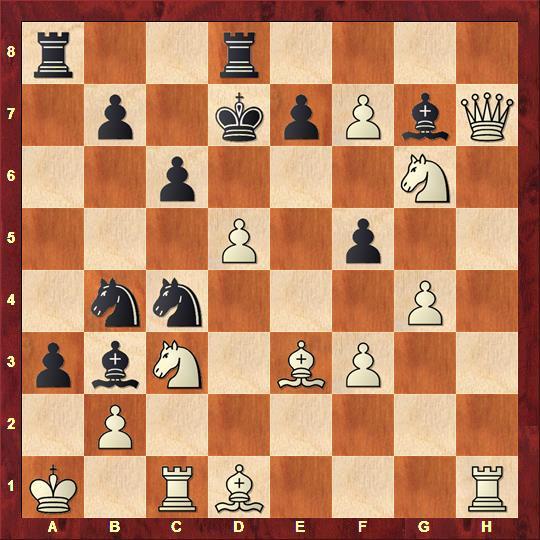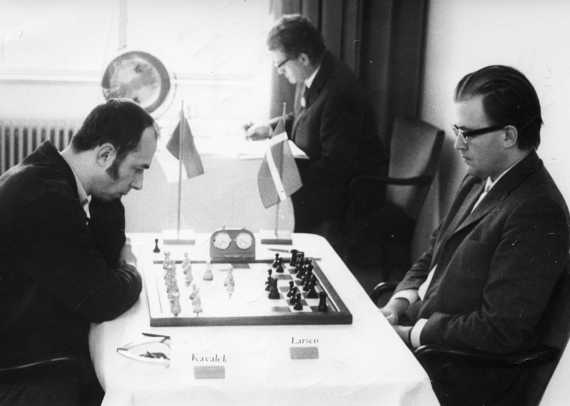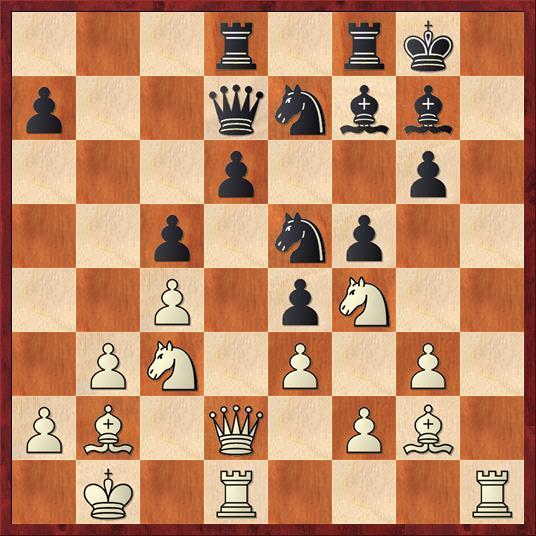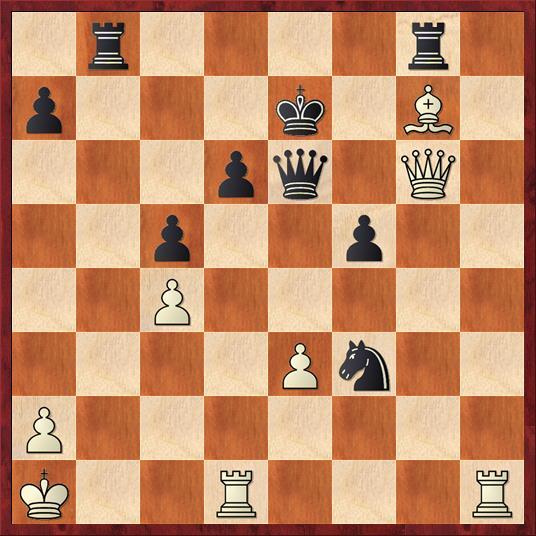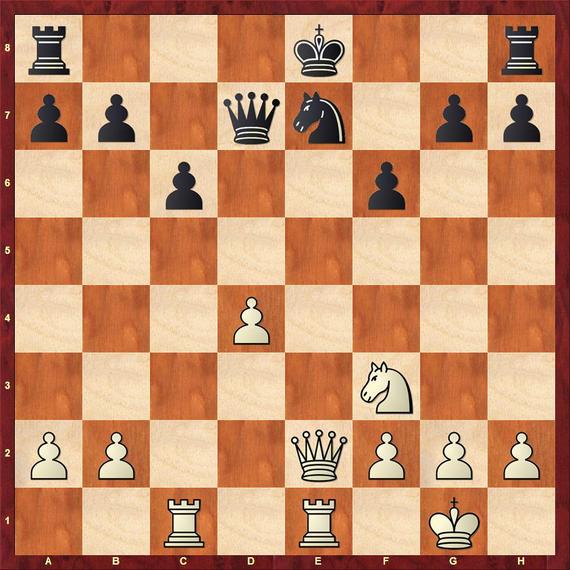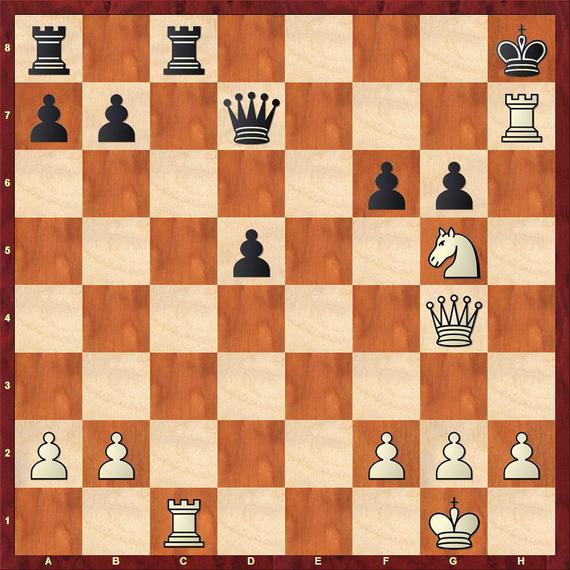The world chess champion Magnus Carlsen finished the year with a victory at the Qatar Masters Open in Doha on Tuesday. He was leading most of the way, but was caught by the Chinese grandmaster Yu Yangyi in the last round and both ended with 7 points in 9 games. However, Carlsen dominated the playoff, winning both games and the trophy.
The Qatar Masters, one of the strongest open tournaments, featured many of the world's best players. Tied for third place with 6,5 points were the Russian grandmasters Vladimir Kramnik, Sergey Karjakin and Sanan Sjugirov, the Chinese GM Ni Hua and the Ukrainian GM Vasyl Ivanchuk. Altogether, 132 players took part.
Carlsen played more sharply and created a masterpiece that was reminiscent of chess history. The same moves and similar middlegame ideas that occurred in the past suddenly reappeared in Carlsen's game against Li Chao. The first world champion William Steinitz employed the attack to the strong square 120 years ago in the best game of his career against Curt von Bardeleben in Hastings in 1895. One of the best modern tournament players, Bent Larsen of Denmark, figured out how to clear the second rank for a devastating attack against me 45 years ago in Lugano in 1970 and considered the game to be his best.
Carlsen also used prophylaxy, appearing in the theory of Aaron Nimzowitsch and the games of the former world champion Tigran Petrosian. And perhaps for the first time in history both kings opposed each other at the corners of the longest diagonal early in the game.
There were opening hustles, attacks and counterattacks, queen sacrifices, and shocking moves before Magnus willed his way to victory. The photo below shows Li's resignation.
Carlsen,Magnus (2834) - Li,Chao (2750)
Qatar Masters Open, Doha 2015
1.d4 Nf6 2.c4 g6 3.f3
Trying to build a strong pawn center and avoid the proper Grunfeld Indian. Alekhine played the move in the world championship matches against Bogoljubov in 1929 and 1931.
3...d5 4.cxd5 Nxd5 5.e4 Nb6 6.Nc3 Bg7 7.Be3 0-0 8.Qd2 Nc6 9.0-0-0 f5
9...Qd6 is more popular, challenging the white center with pieces.
10.e5
Chess is all about squares. Carlsen gives up the light squares on the diagonal a2-g8, but gains control of the dark squares on the kingside.
10...Nb4 11.Nh3 Qe8?!
Is the unusual new idea to play 12...Na4 next?
12.Kb1
Carlsen decided to wait for the move Bc8-e6 to go Nh3-f4. At the same time, he is refraining from the kick a2-a3, not weakening the light squares around his king.
12...a5
Li probably realized that 12...Na4 13.Bc4+ Kh8 14.Nxa4 Qxa4 15.Bb3 Qb5 16.Bg5 gives White a big advantage.
13.Be2 c6
Giving up on the diagonal a4-e8. The move 11...Qe8 now turns out to be a waste of time. Magnus' developing moves are easy to make since he has more space.
14.Rc1 Kh8 15.Ka1
A good prophylactic move. Carlsen foresees that his a-pawn may fall and he does not want it to happen with a check. There is a little bit of Nimzowitsch or Petrosian in it. Another unique feature is that both kings line up at the corners of the long diagonal after only 15 moves - perhaps for the first time in chess history.
15...Be6
Finally, Black is done waiting. The bishop comes to e6 and the real fight begins.
16.Nf4 Qf7
After 16...Bg8 comes 17.h4. 
17.h4!?
Carlsen does not want to lose the rhythm of the attack. He didn't see any clear-cut option and the pawn sacrifice was too interesting. Advancing the rook pawns was Bent Larsen's trademark. He was planning to write a book about it, but he never did.
17...Bxa2?!
Li could have made Carlsen's task more difficult with 17...Rfd8 18.Nxe6 Qxe6 19.f4 h5.
But not the immediate 17...h5 18.g4 and White breaks through on the kingside.
18.h5 Kg8
The complications after18...g5 are in White's favor 19.Ng6+ The point! 19...Kg8 20.Nxf8 and now:
A. 20...f4 21.Nxh7! fxe3 22.Qxe3 Kxh7 23.h6 Bf8 (23...Bh8 24.Bd3+) 24.d5 attacking the knight on b6, White wins. For example:
a1. 24...N6xd5 25.Qe4+ Kh8 26.Nxa2 Nxa2 (26...Nf6 27.e6 Nxe4 28.exf7+-) 27.e6 wins.
a2. 24...Bxd5 25.Qxb6 wins.
B. 20...Bxf8 21.Bxg5 with advantage.;
Magnus was expecting 18...gxh5, but White has two ways to deal with it successfully:
A.19.Nxh5 Rg8 (19...a4 20.Nxg7) 20.Nf4 a4 21.e6 Bxe6 22.Rxh7+ Kxh7 23.Rh1+ Bh6 24.Nxe6 Rg6 25.Ng5+ wins.
B.19.Rxh5 a4 20.Rch1 a3 21.Rxh7+ Kg8 22.e6 Bxe6 23.Rxg7+ Kxg7 (23...Qxg7 24.Nxe6+-) 24.d5 N6xd5 25.Nfxd5 Nxd5 26.Bh6+ Kf6 27.Ne4+! and White mates.
19.hxg6 hxg6
We have to go back 45 years to Lugano to see the ideas from the game Larsen-Kavalek. The similarity to Carlsen's game is breathtaking. The great Danish grandmaster already played in Carlsen's mode: he got the knight to f4, pushed his h-pawn and exchanged it on g6.
Larsen-Kavalek, Lugano 1970
After 19 moves
In his book Studies for Practical Players, published by Russell Enterprises in 2009, the outstanding Russian chess composer Oleg Pervakov wrote:" White has opened the h-file, and taken aim at the black king. It would be nice to push the queen over to h2 - but how? The d2-e1-g1-h2 route is pretty long and would grant Black time to whip up counterplay on the queenside. Larsen finds a cardinal solution to the problem." And indeed, Larsen's line-clearing on the second rank is remarkable: 20.g4! Nxg4 21.f3! exf3 22.Bxf3 Ne5 23.Qh2 and the queen is ready to infiltrate Black's position. Larsen's attack can be replayed at the end of this article.
Let's see how Carlsen did it.
20.g4!
Clearing the second rank for the queen to land on the h-file. It is just a coincidence that the move g2-g4 also occurs on move 20 in the Larsen game.
20...Bb3
After 20...a4 21.Bd1 a3 22.b3! Bxb3 23.Qh2 White is first.
21.Bd1!
Challenging the bishop on b3. The line-clearing is finished. Carlsen's queen is ready to land on h2.
21...a4
After 21...Bxd1 22.Qh2! Qb3 23.Qh7+ Kf7 24.Qxg6+ Kg8 25.Ne6 wins.
22.Qh2
There she goes!
22...Rfd8 23.Qh7+ Kf8 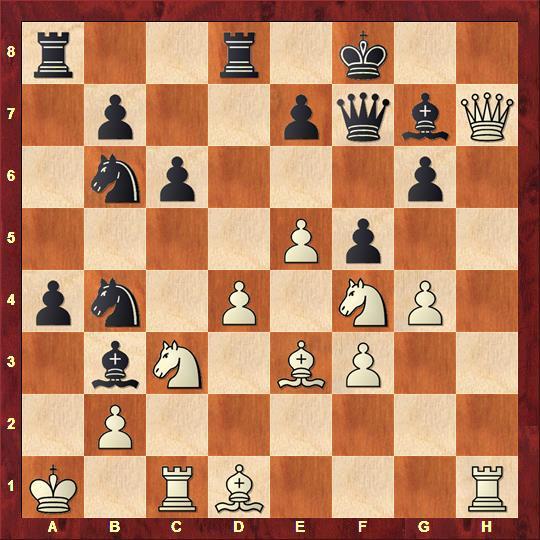
24.d5!
Carlsen is attacking the strongest square that is covered six(!) times.
The black knight on b6 is hanging and the d-pawn cannot be taken: 24...N6xd5 25.e6! Qf6 26.Nxg6+ Ke8 27.Qg8+ Bf8 28.Rh8 and White mates soon.
This beautiful interference brings us to William Steinitz's best game played 120 years ago in Hastings. His opponent, the German count Curt von Bardeleben did everything to stop the d-pawn and yet, Steinitz did not blink and pushed the pawn forward to d5.
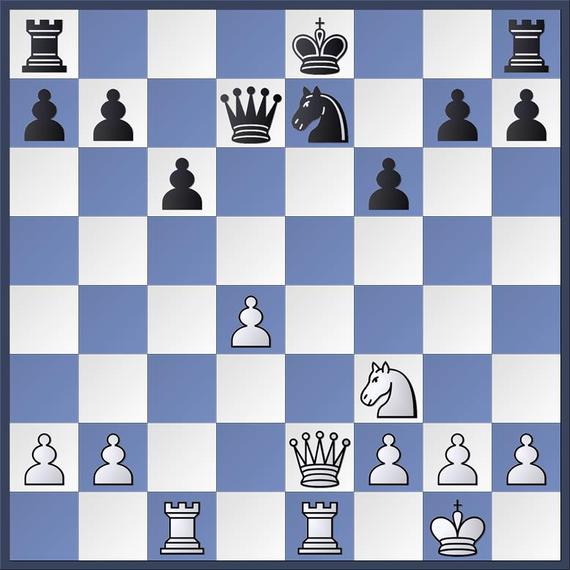
Steinitz-von Bardeleben, Hastings 1895
Before 17.d5!
It freed the square d4 for the knight that jumped further to the square e6, signaling one of the most beautiful attacking finishes. The attack can be replayed at the end of the article.
24...Nc4!?
Amazing idea, Carlsen did not see at all. Li Chao creates a virtual mating attack. The chessboard suddenly becomes a mine field. Everything can go wrong with one false step.
25.Nxg6+ Ke8
The queen sacrifice doesn't work here: 25...Qxg6 26.Qxg6 a3 27.Rh8+! Bxh8 28.Bh6+ and White mates first.
26.e6 a3!
An entertaining queen sacrifice, threatening mate in two. There is only one way out.
27.exf7+ Kd7
28.Ne5+!!
An important check, challenging the knight on c4. "If you are close to being mated and you see a way to avoid it, you don't think much, you just do it," Carlsen explained.
Surprisingly, after 28.f8N+? Ke8 White gets mated: 29.bxa3 Rxa3+ 30.Kb1 Rda8 and there is a mate on the square a1.
28...Bxe5
White wins either after 28...Kc7 29.Nxc4 axb2+ 30.Kxb2 Bxc4 31.Qxg7; or after 28...Nxe5 29.Bxb3.
29.Qxf5+ Kc7
After 29...e6 30.Qxe6+ Kc7 31.Qe7+ Rd7 (31...Kc8 32.Qxd8+ Kxd8 33.f8Q++-) 32.Nb5+! cxb5 33.Qxe5+ Rd6 34.Rxc4+ Bxc4 35.Qe7+ wins.
30.Qxe5+!
The final deflection of the dangerous knight wins material. 30.Nb5+ is less precise.
30...Nxe5
After 30...Kc8 31.Qe6+ Kb8 32.Bf4+ Ka7 33.bxa3 wins.
31.Bxb3 axb2+
Or 31...Ned3 32.Nb5+ Kb8 33.Nxa3 wins.
32.Kxb2 Nbd3+ 33.Kb1 Nxc1 34.Rxc1 Kc8 35.dxc6 bxc6 36.f4
After 36...Nd7 37.Nd5 wins.
Black resigned.
In Lugano in 1970, Larsen wrote on the back of this photo: "With best wishes to Lubos, who allowed me to believe in chess beauty." We reached a key moment of the game and I could have sacrificed my bishop on c4 with a possible powerful attack. But I backed off and Bent took advantage with a wonderful finish, creating his signature game.
Larsen, Bent - Kavalek, Lubomir
Lugano 1970
In his book Studies for Practical Players, published by Russell Enterprises, the outstanding Russian chess composer Oleg Pervakov writes:" White has opened the h-file, and taken aim at the black king. It would be nice to push the queen over to h2 - but how? The d2-e1-g1-h2 route is pretty long and would grant Black time to whip up counterplay on the queenside. Larsen finds a cardinal solution to the problem." And indeed, Larsen's line-clearing on the second rank is remarkable.
20.g4! Nxg4
Now after 20...Bxc4 white plays 21.gxf5 and his attack is faster.
21.f3! exf3 22.Bxf3 Ne5
Larsen claims correctly that after 22...Nf6 23.Qh2 Rfe8 24.Nb5 Nc8 25.Bxf6 Bxf6 26.Qh7+ Kf8 27.Bd5 white wins quickly, e.g. 27...g5 28.Ng6+ Bxg6 29.Qg8+ Ke7 30.Rh7+ Bxh7 31.Qf7 mate.
23.Qh2
Achieving the aim. The white queen is ready to infiltrate black's position.
23...Bxc4!?
After 23...Rfe8 24.Nb5 Nc8 25.Qh7+ Kf8 26.Bd5 threatening 27.Nxg6+, white wins.
24.bxc4
24.Ncd5!? Kf7 25.Qg2 should also win.
24...Nxf3 25.Qh7+ Kf7 26.Ncd5 Rg8 27.Nxe7 Rb8 28.Ka1
28.Kc1 won less brilliantly, e.g. 28...Qxe7 29.Qxg6+ Kf8 30.Bxg7+ Qxg7 31.Ne6+.
28...Qxe7 29.Qxg6+ Kf8 30.Ne6+ Qxe6 31.Bxg7+!
Sidestepping the last trick 31.Qxe6 Bxb2+ 32.Kb1 Ba3+ 33.Ka1 (33.Kc2 Rg2+ 34.Kd3 Ne5+-+) 33...Bb2+ and black draws.
31...Ke7
Almost escaping, but Larsen nails down a magnificent finish.
32.Bf8+! Rbxf8 33.Rh7+
After 33...Rf7 34.Rxf7+ Qxf7 35.Qxd6+ Ke8 36.Qd8 mates. Black resigned.
The weather was very hot in Hastings, England, on Saturday, August 17, 1895, when Steinitz created his masterpiece against von Bardeleben. It won the five pounds sterling top brilliancy prize. The committee noted that " the whole of the play was extremely artistic and beautiful, as well as brilliant." Steinitz considered the 14-move combination his best game overall. Here is what happened 120 years ago.
17.d5!
Attacking at Black's strongest point. It opens the c-file and vacates the square d4 for the knight, using it as a trampoline to jump to e6. But at the same time, the winning pawn sacrifice is forced. It is an act of desperation since Black threatens to fix his position with Ke8-f7 and block the pawn on d4 with Ne7-d5.
17...cxd5 18.Nd4 Kf7 19.Ne6
Threatening 20.Rc7. In general, one of the winning strategies in chess is to anchor a white knight along the sixth rank and you are half there.
19...Rhc8
White wins either after 19...Rac8 20.Qg4!;
or after 19...Nc6 20.Nc5 Qc8 21.Qh5+ g6 22.Qxd5+ Kg7 23.Ne6+ Kh6 24.Re3 threatening 25.Rh3 mate.
20.Qg4! g6
The only way to defend g7 since after 20...Ng6 21.Ng5+ wins outright.
21.Ng5+ Ke8
After 21...fxg5?? 22.Qxd7 wins.
Steinitz now begins an amazing 14-move combination.
22.Rxe7+!
The rook is running amok along the seventh rank. The variation 22.Nxh7 Qxg4 23.Nxf6+ Kf7 24.Nxg4 wins a pawn, but according to Schallopp, it is only for mortals. Steinitz is creating his immortal game.
22...Kf8!
What a sight! Incredibly, all four white pieces are hanging. Black could not take the rook: 22...Qxe7 23.Rxc8+ Rxc8 24.Qxc8+ wins;
or 22...Kxe7 23.Re1+ Kd6 24.Qb4+ Rc5 (24...Kc6 25.Rc1#; 24...Kc7 25.Ne6+ Kb8 26.Qf4++-) 25.Re6+ wins.
23.Rf7+!
23.Qxd7?? Rxc1+-+;
23...Kg8!
After 23...Qxf7 24.Rxc8+ Rxc8 25.Qxc8+ Qe8 26.Nxh7+ wins.
24.Rg7+! Kh8!
After 24...Kf8 25.Nxh7+ Kxg7 26.Qxd7+ wins.
25.Rxh7+!
Black disappeared from the tournament hall without resigning. After his time ran out, Steinitz demonstrated the win: 25.Rxh7+! Kg8 26.Rg7+ Kh8 27.Qh4+! Kxg7 28.Qh7+ Kf8 29.Qh8+ Ke7 30.Qg7+ Ke8 31.Qg8+ Ke7 32.Qf7+ Kd8 33.Qf8+ Qe8 34.Nf7+ Kd7 35.Qd6 mate.
Happy New Year!
Note that in the replay windows below you can click either on the arrows under the diagram or on the notation to follow the game.
Images by Maria Emelianova and Katerina Savina from the official web site.

